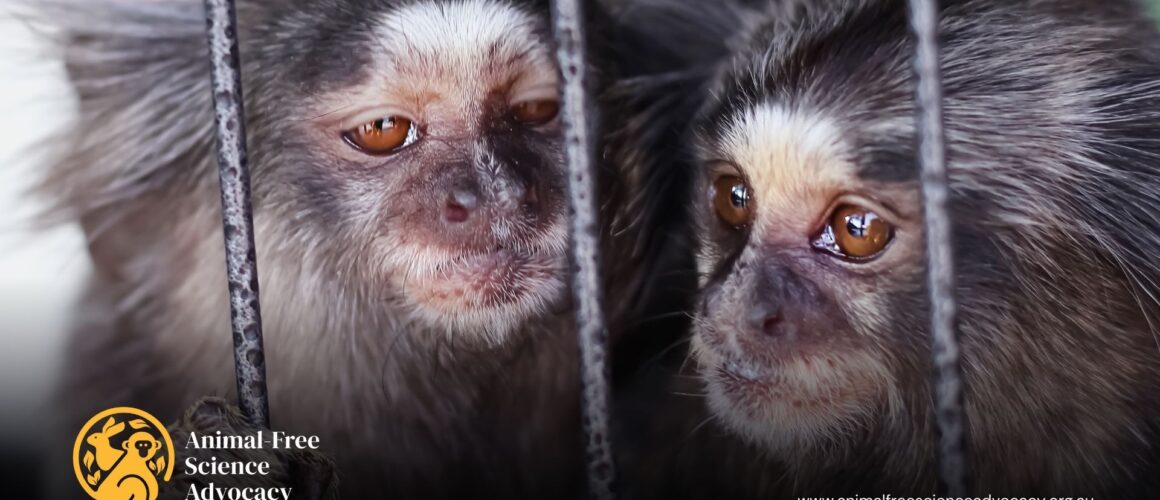On August 19 2021, Humane Research Australia (HRA) will release a new case study questioning the scientific relevance of fear experiments conducted on marmosets by researchers at Monash University, in search of new insights about human anxiety.
HRA’s CEO, Rachel Smith says, “Humans do not suffer anxiety and fear in the same way that non-human primates, much less those in a laboratory setting, do. For humans, fear is often caused by perceived and imagined conditions. This experiment does not replicate fear in the human, or provide evidence that the use of the marmoset model will translate to outcomes for human patients suffering from anxiety or fear. HRA is calling for investment in scientifically valid non-animal research methods in place of research like this, which is simply attempting to perpetuate the use of primates as research models.”
The HRA case study cites a research paper published in December 2020 revealing experiments that used rubber snakes to deliberately induce predator fear in marmosets, repeatedly eliciting a survival response. The marmosets were then killed, had their brains removed and then studied. HRA proposes that this research is unnecessary, unethical and an irresponsible use of Australian taxes. The case study questions the validity of the research, noting that marmosets, like all primates, are highly intelligent, social animals who endure extreme physiological and psychological harm when held captive in a laboratory. The animals are likely to have already been experiencing acute stress and fear before the experiments with the snake even commenced.
The publication offers no explanation of the human benefit from the research, rather it states a general purpose to observe the brain activity of the marmosets to speculate the causes and therapeutic treatment of anxiety-related disorders in humans. HRA’s case study questions the ethics and relevance of the research, highlighting distinct differences between psychological fight-flight responses in humans and the predator fear responses in non-human primates.
Neurologist and HRA science associate, Dr. Jarrod Bailey, explains, “These experiments caused considerable suffering and death to highly sensitive and sentient animals, and all with tenuous and dubious relevance to humans. Significant and widespread differences between monkeys and humans mean that data are rarely relevant from one species to another. Elegant human-specific research has been and is being done in this field of research, and provides data that can be relied upon, all without causing pain and suffering to animals. On top of this, the stress caused to the monkeys was not just a welfare issue, but meant the data were not reliable. Those who conducted, funded, facilitated and approved these experiments must do better—for monkeys, and for humans relying on good science.”
Grants for this research were provided from various sources, including a fellowship totalling $611,645 from the National Health & Medical Research Council provided to lead researcher, James Bourne. The marmosets were sourced from the Australian National Nonhuman Primate Breeding and Research Facility (Gippsland, Victoria).
HRA currently have a petition with over 100,000 signatures calling for the ban of primate experiments in Australia. This latest case study is one of several known cases in Australia where non-human primates are still being bred and used in scientific research, despite availability of scientifically valid alternatives.
